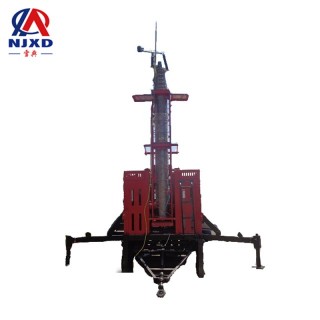NEWS
Development History of data communication emergency communication ups and downs
Time:2020-12-15 View:

Data communication is a new communication mode produced by the combination of communication technology and computer technology. To transmit information between the two places, there must be a transmission channel. According to the different transmission media, there must be a difference between wired data communication and wireless data communication. However, they all connect data terminals with computers through transmission channels, so that data terminals in different locations can share software, hardware and information resources.

Introduction
Development
The first stage: give priority to language and transmit information through original means such as manpower, horsepower and beacon fire.
The second stage: text and post. (Added means of information dissemination)
The third stage: printing. (Expand the scope of information dissemination)
The fourth stage: telegraph, telephone, radio. (Enter the era of electrical appliances)
The fifth stage: in the information age, besides language information, there are also data and image history.
Communication, as telecommunications, began in the 1930 s. Faraday discovered electromagnetic induction in 1831. In 1837, Morse invented the Telegraph. Maxwell's electromagnetic field theory in 1873. Bell invented the telephone in 1876. Marconi invented radio in 1895. It opens up a new era of telecommunications. The electronic tube was invented in 1906, thus analog communication was developed. Nyquist criterion and sampling theorem in 1928. The Shannon theorem in 1948. The invention of Semiconductor in 1950 s led to the development of digital communication. Integrated circuit was invented in 1960 s. The concept of geostationary satellite was put forward in the 1940 s, but it could not be realized. Aerospace technology in the 1950 s. In 1963, synchronous satellite communication was first realized. The invention of laser in 1960 s attempted to be used for communication, but failed. Optical fiber was invented in 1970 s, and optical fiber communication was developed.
Historical figures
Bell (1847-1922), British, worked in London in 1868. In 1871, I went to Boston to work. In 1873, he was a professor at Boston University. In 1875, multiple telegrams were invented. In 1876, the telephone was invented. He has won many patents in his life. The wife is deaf.
Marconi (1874-1937), Italian, tested in his father's manor in 1894. In 1896, I went to London. In 1897, the Wireless Telegraph Company was established. In 1899, wireless communication between Britain and France was first realized. In 1916, short wave radio communication was realized. In 1929, a worldwide wireless communication network was established. He once won the Nobel Prize. He once joined the fascist party.
Data communication history
Data communication began in the early 1950 s and developed with the development of computer remote information processing applications. Most of the early telematics systems were centered on one or several computers and connected a large number of remote terminal by means of data communication, forming a centralized terminal-oriented processing system. In the late 1960 s, starting from the birth of ARPA Computer network in the United States, different computer communication networks aimed at resource sharing emerged, thus opening up a new field of computer technology-Network and Distributed Processing Technology. After 1970 s, computer network and Distributed Processing Technology have developed rapidly, thus promoting the development of data communication. In 1976, CCITT officially published the X.25 proposal, an important standard of packet switched data network, and then it was improved and revised many times, laying a foundation for the technological development of public and private data networks. In the late 1970 s, in order to promote the interconnection of different types of systems, the International Organization for Standardization (ISO) proposed an open system Interconnection (OSI) reference model, which was formally passed in 1984 and became an international standard. Since then, the development of computer network technology and application is carried out according to this model.

CATEGORY
NEWS
- Emergency lifting mobile communication standard
- Development History of data communication emergency communication ups and downs
- Classification and transmission means of data communication emergency communication base station
- Communication system structure of lifting emergency data communication
- Basic Theory of data communication emergency lifting antenna